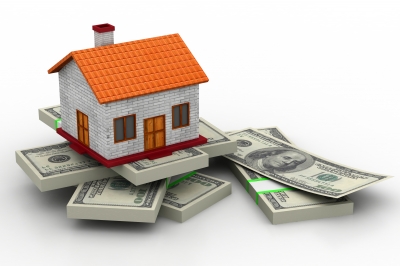
A big part of anyone's home-buying experience is the
mortgage. However, many
first-time home buyers may be unsure exactly what it is and why it is so important to understand all the terms of the mortgage. Once you have a firm grasp of the different types of
mortgages and what each type involves, you'll be in a better position to attain a mortgage and a new home.
What is a mortgage?
A mortgage is essentially a loan you take out to pay for your home. While regular loans often require that you put something up as collateral, when you take out a mortgage to pay for your home, the home itself is your collateral. You will have to
pay your mortgage in monthly installments over a long period of time, usually 15 or 30 years. Since a mortgage is probably the biggest loan you'll ever take out, it is necessary that you know all of the mortgage options available to you as well as all the details, pricing, and other important factors involved.
Though there are three main types of mortgages, there are many other subcategories for each one. Each type of mortgage has its own advantages and disadvantages. You will need to select one depending on your financial situation, the amount of time you wish to stay in the home, and several other conditions.
Fixed-rate mortgage
This is the most common type of mortgage, with about 75% of all mortgages falling under this category. With a fixed interest rate mortgage, you will have the same interest rate throughout the term of the loan. If you choose this type of mortgage, you will know exactly how much you have to pay toward it each month, allowing you to budget your expenses accordingly. No matter what the current interest rate for the rest of the market is, your rate will never increase or decrease. While it is good to know in advance what your monthly mortgage payments will be, there are a few disadvantages to a fixed-rate mortgage. For one, the interest rate is usually higher than it is for other mortgages, and the monthly payments are often higher as well. On top of that, there is much less flexibility in creating a payment plan for your fixed-rate mortgage.
Bottom Line: The fixed-rate mortgage is pretty simple and straightforward, making it a good option for first-time home buyers who want to know what they have to pay each month.
Adjustable-rate mortgage
If you choose to go with an adjustable-rate mortgage, the interest rate of your loan will change over time. For the most part, you will face a relatively lower interest rate and monthly payment. These rates will remain the same throughout the initial adjustment period. During this time, which can last anywhere from 6 months to 10 years, your lenders will establish the starting point of when your rate can change and the frequency of rate changes throughout the term of the loan.
There are a few factors that determine the actual adjustments in the interest rate of your loan. One is based on a published index of current financial conditions. The two most commonly used indexes are the London Interbank Offered Rate and the U.S. Constant Maturity Treasury. Another factor that determines the changes in the interest rate is the margin, which is a certain percentage added on to the index.
Based on the particular index at the time of each adjustment period, the interest rate and monthly payment can increase or decrease. To protect you from paying extremely high prices, should the index increase dramatically, there are ceilings in place to limit the amount your monthly payment can increase. At the same time, you lender will be protected from decreases in the rate by minimum rate caps.
Bottom Line: Though this is a riskier option than a fixed-rate mortgage, the initial lower payments make it easier to pay for a more expensive home. Add the same time, you can expect higher payments toward the end of the loan.
Balloon mortgage
A balloon mortgage is somewhat of a mix between a fixed-rate mortgage and an adjustable-rate mortgage, only a lot riskier than the other options. It starts out with a low interest rate and monthly payment, which will remain constant for 5 or 7 years. At the end of that time frame, though, the remaining balance of the loan will be due.
Since most people won't have a large amount of money on hand to pay off the mortgage, the loan is usually refinanced into another type of mortgage. By getting a balloon mortgage, though, you will be guaranteed a lower monthly payment for the first 5 or 7 years you own the home. If you anticipate a higher salary or believe that the interest rate will lower in the future, you may decide to choose this option. The biggest risk involved is that you may not be approved to refinance the loan when the remainder of the balloon mortgage is due. If you are unable to pay the remainder of the balloon mortgage, your home could get foreclosed.
Bottom Line: If you plan on moving out of the house before the balloon payment is due, you can take advantage of the initial low interest rate. However, balloon mortgages are a risky option, since a lot of speculation about the future is involved.
Though there are other types of mortgages out there, these are the three most basic options you are likely to face when you try to buy a home. Remember to carefully weigh your options and consult a financial advisor or other professional if you have any questions or concerns. Taking out a mortgage is a big deal, as it involves a lot of money being paid over a long period of time. You should choose your mortgage carefully, taking into account your financial situation and future plans.
Photo by: Stuart Miles (Freedigitalphotos.net)